The diagram of the stomach
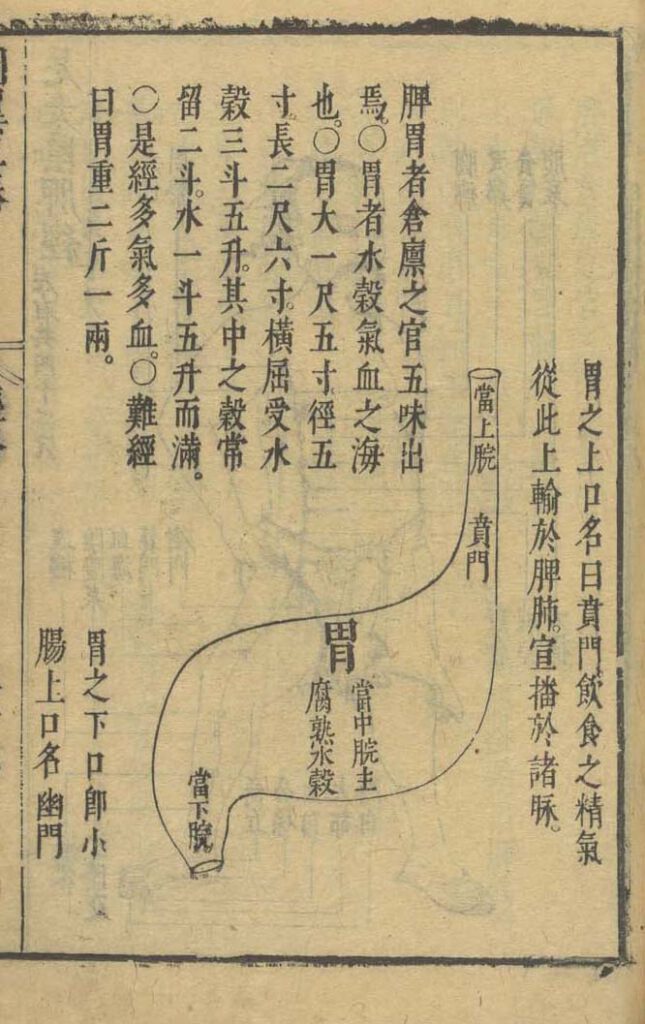
The diagram of the stomach from Zhang Jiebin (1563-1640), Illustrated Wing of the “Classified Canon” (Leijing tuyi), woodblock edition, preface dated 1624 From the collection of the Harvard-Yenching Library, Harvard University – This image of the stomach accompanies Zhang’s illustration of the pathway of the Foot Yang Brightness Stomach Channel. The upper text begins with […]
The hand lesser yin heart channel

The hand lesser yin heart channel (two facing pages) from Zhang Jiebin (1563-1640), Illustrated Wing of the “Classified Canon” (Leijing tuyi), woodblock edition, preface dated 1624. From the collection of the Harvard-Yenching Library, Harvard University – In writings on acupuncture, it became common to pair an image of an internal organ with an image of […]
Diagram of the Inner Landscape
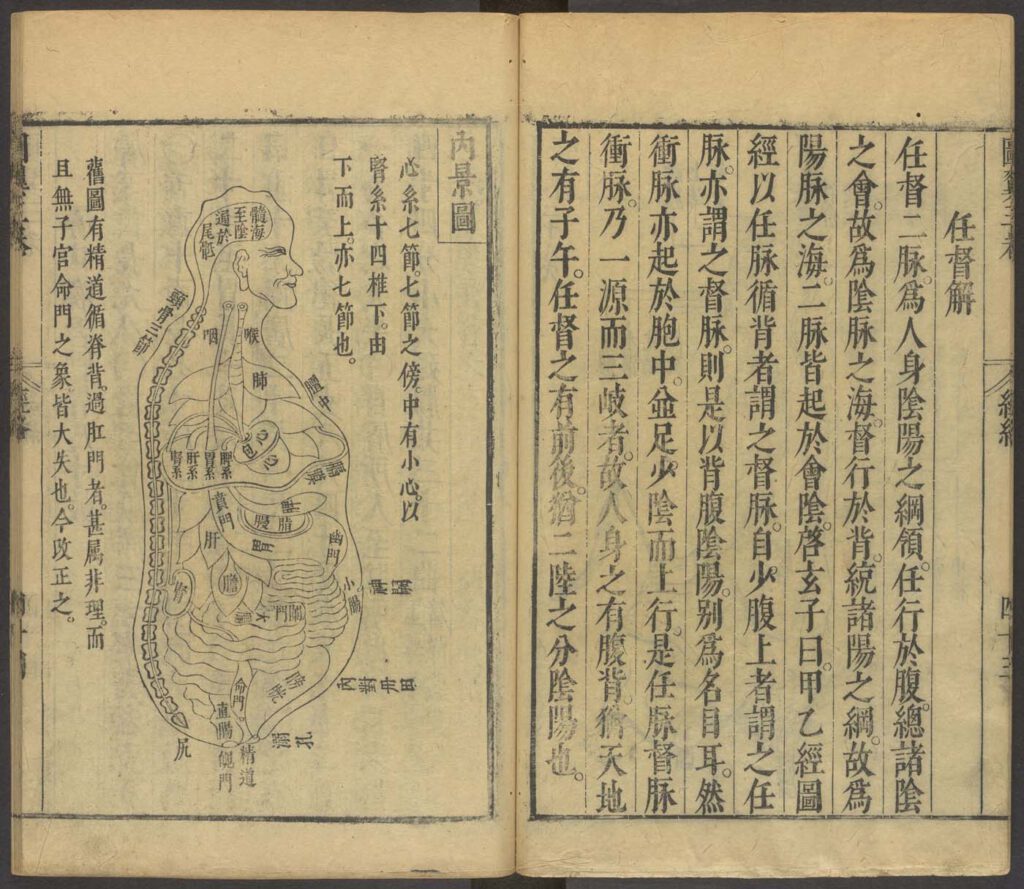
Diagram of the inner landscape from Zhang Jiebin (1563-1640), Illustrated Wing of the “Classified Canon” (Leijing tuyi), woodblock edition, preface dated 1624. From the collection of the Harvard-Yenching Library, Harvard University – In his magnum opus, The Classified Canon (Leijing), the physician Zhang Jiebin reorganized the contents of the Yellow Emperor’s Inner Canon by topic. […]
Apollo the Python-Slayer or Cleveland Apollo
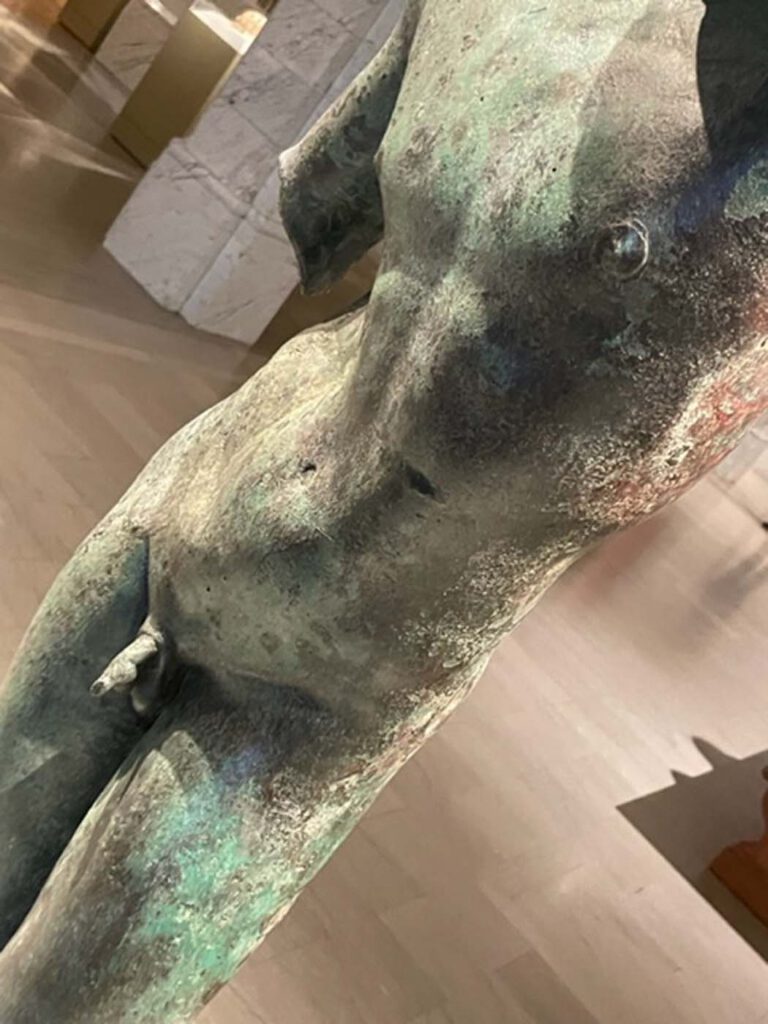
Apollo the Python-Slayer or Cleveland Apollo Hellenistic (?) Courtesy of the Cleveland Museum of Art. Museum Number 1839,0214.51 – The celebrated Cleveland Apollo is one of the most famous works attributed to the fourth-century Attic sculptor Praxiteles. Many later marble copies survive, but this bronze classical piece came to public attention only in 2004 when […]
Grotesque figurine
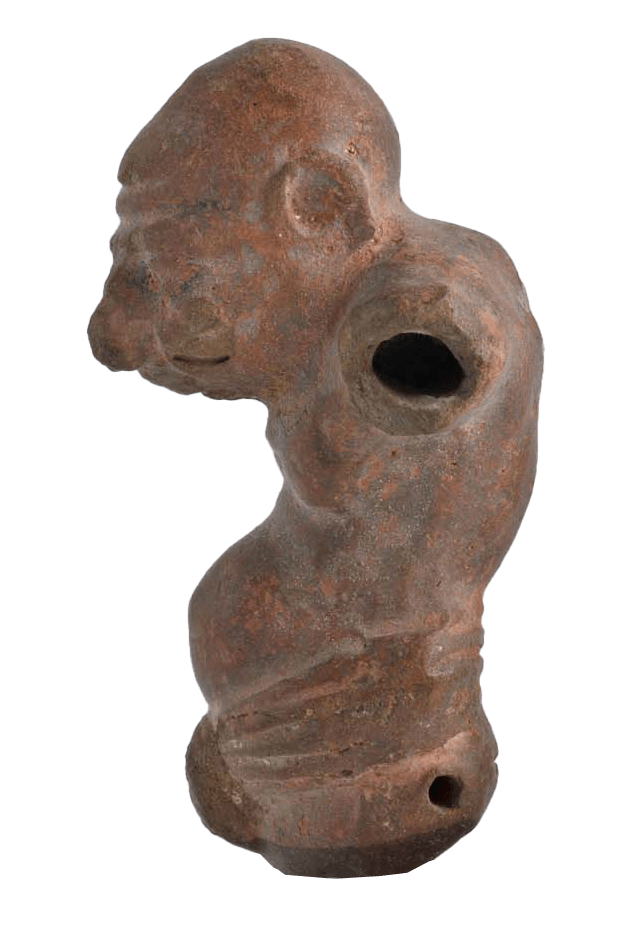
Grotesque terracotta figurine 3rd century BCE–3rd century CE (?) © 2023, Benaki Museum, Athens. Benaki Museum inv. No 12793 – This Hellenistic terracotta, part of the Benaki Museum collection in Athens, depicts with hyper-realistic traits an old, and/or ‘disabled’ man with a protruding pot belly, achieving a grotesque effect and signalling a pathology while offering […]
Marble tombstone of an Athenian physician
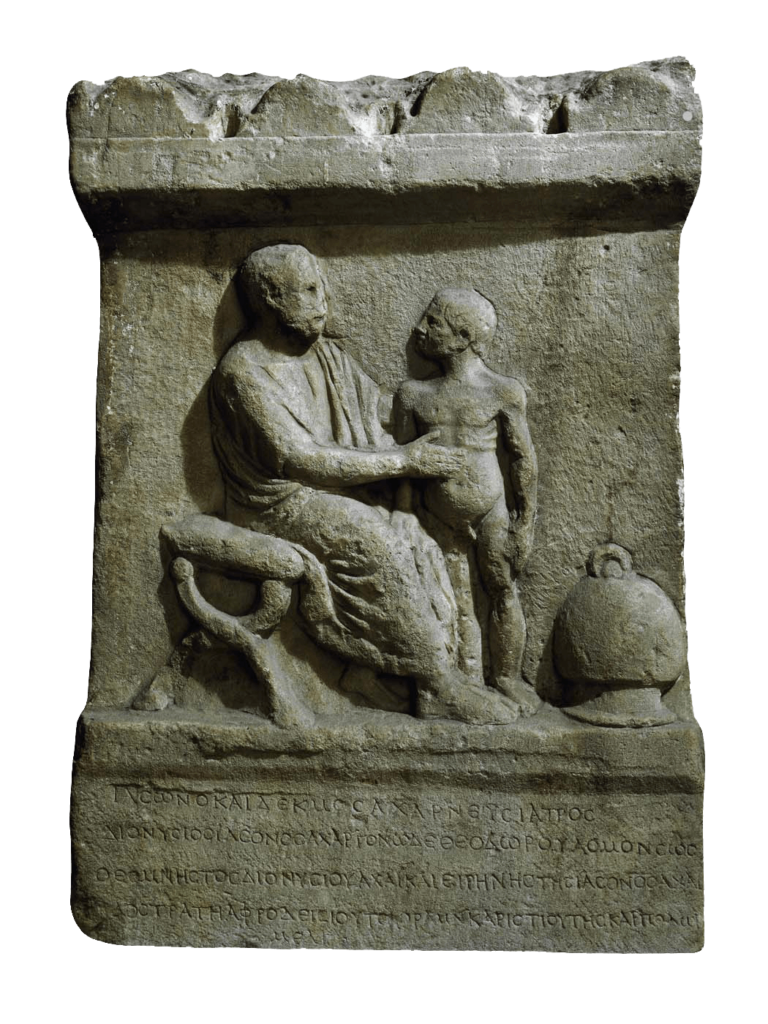
Athens, 2nd century CE
Master Yan Luo’s head maps • frontal view and southwards looking
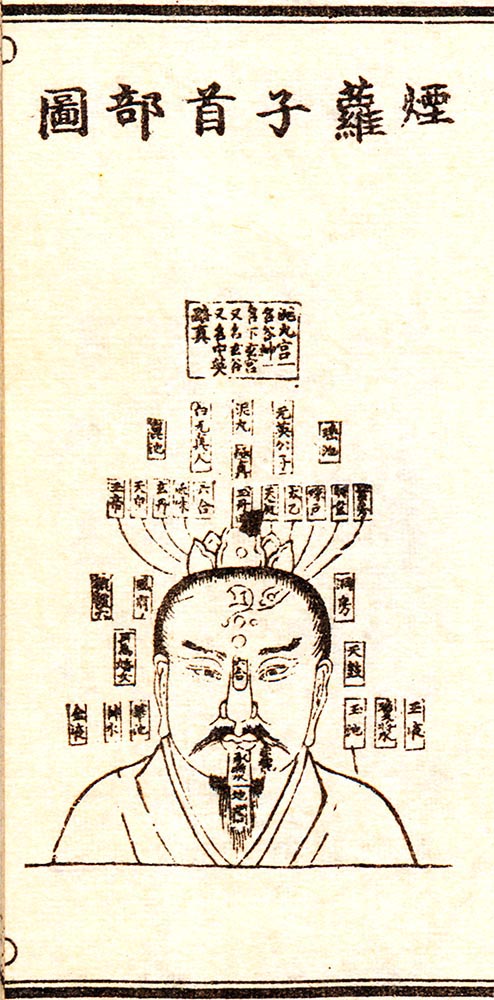
This page is viewed best with a large screen. 1 2 3 4 5 6 7 8 9 10 11 B ‘Master Yan Luo’s map of courting the perfected’ (Ti ke ge, 2b) 1 2 3 4 5 6 7 8 9 10 11 12 13 14 15 16 17 18 19 20 21 22 […]
Wall scene from tomb of King Ramesses III
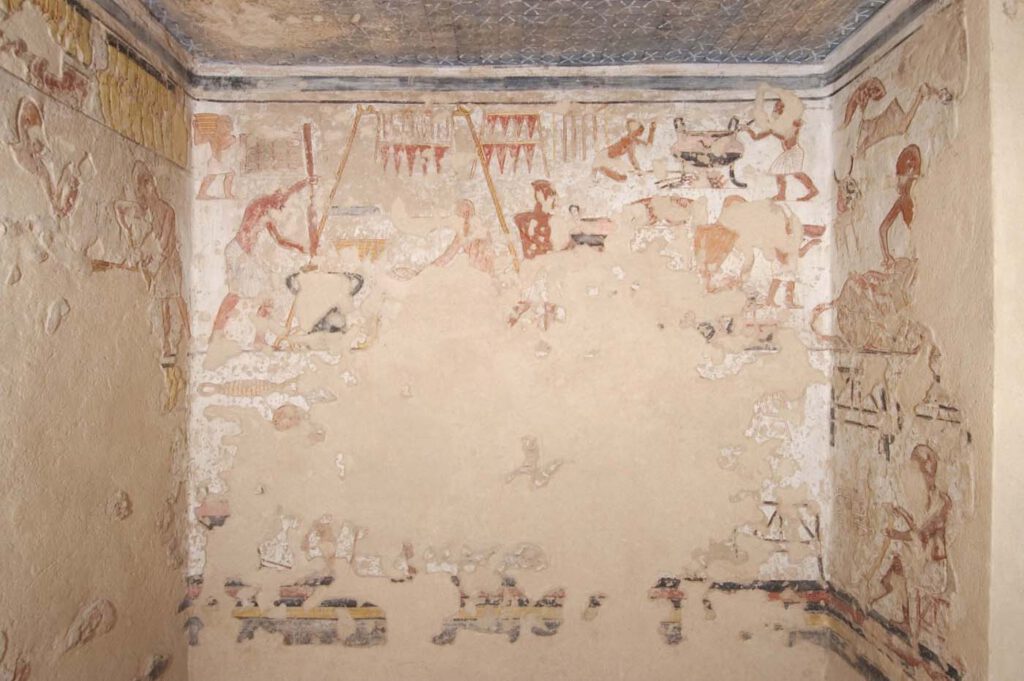
Wall scene from tomb of King Ramesses III (KV11) Photo: Matjaz Kacicnik, Theban Mapping Project – The fragmentary wall decoration of this chamber depicts butchery and cooking activities connected to the funeral or mortuary cult of the tomb’s royal owner. On the right wall a man is seen butchering a bound ox, while the back […]
The Body
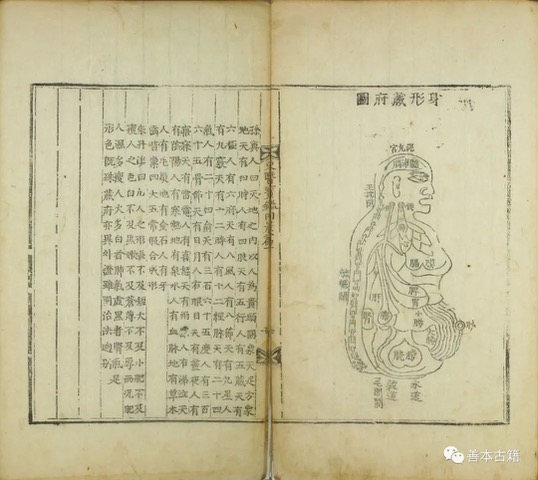
The Body Diagram showing the location of the organs responsible for digestion, including spleen, stomach, small intestine, large intestine, and urinary bladder (from Hǒ Chun, Treasured Mirror of Eastern Medicine). – In the representative Korean medical text, Tongui Pogam 東醫寶鑑Treasured Mirror of Eastern Medicine (1613), Hǒ Chun explained the body, in Daoist and Buddhist conceptual […]
Drawing of rock carving of an elk with numerous anatomical parts depicted
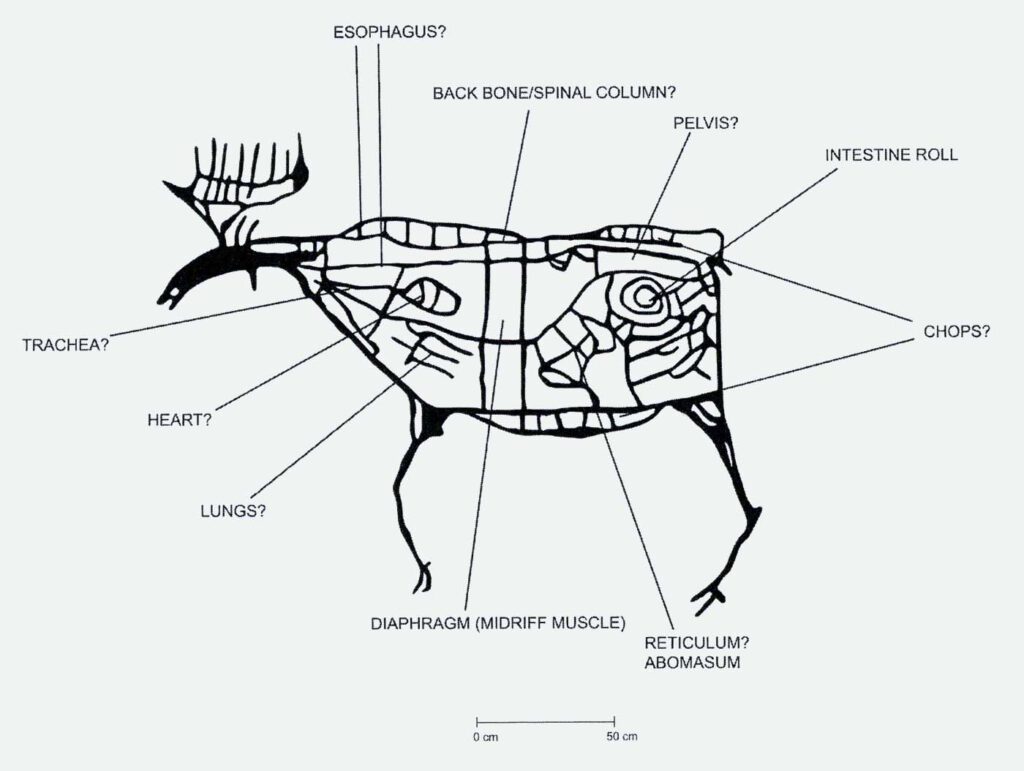
Drawing of rock carving of an elk with numerous anatomical parts depicted. Åskollen in southern Norway. From: Rock Art and the Wild Mind. Visual Imagery in Mesolithic Northern Europe. Ingrid Fuglestvedt, Copyright © 2018, London, Routledge. Figure 5.2, page 192. Reproduced by permission of Taylor & Francis Group. – A few rock carvings in southern […]
